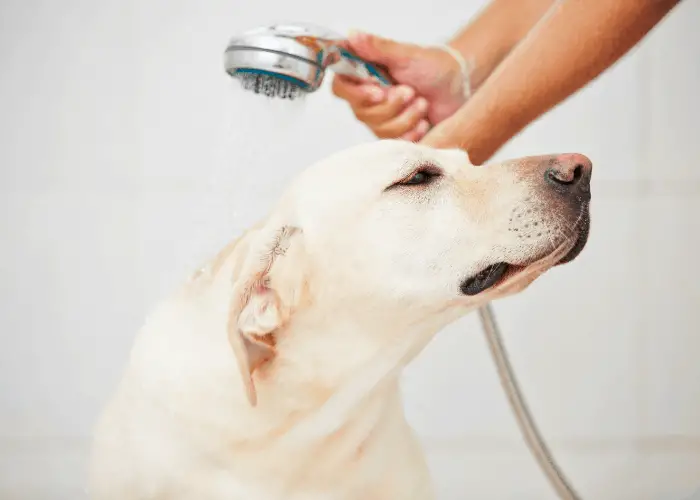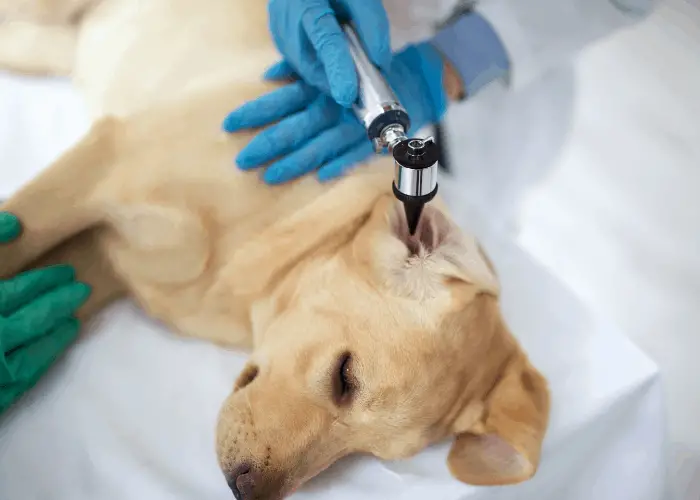The Labrador Retriever is well known for its friendly and loyal personality and loves being around people.
Other Names: Labrador, Lab
Country Of Origin: Canada
Dog Group: Retriever/sporting
Size: Large
Recommended For: Families, couples, single owners
Maintenance Level: Low/moderate
Lifespan: 12-13 years
Temperament: Loyal, affectionate, loving
FAQ:
Good For the First-Time Owner: Yes
Good With Children: Yes
Good With Other Animals: Yes
Good With Strangers: Yes
Good For Apartments: No
Exercise Requirements: Daily walking
Can Live In Hot Weather: Yes
Can Live In Cold Weather: Yes
Can Tolerate Being Left Alone: Yes
Grooming: Low/moderate
Trainability: Easy
Breed Overview:

The Labrador Retriever is an incredibly well-known breed of dog that originates in Canada.
It was bred as a retrieving dog for water hunting, but the Labrador Retriever temperament meant it quickly became a popular family and companion pet.
Labs are a great choice for almost any owner, as they’re low maintenance and friendly dogs.
They’re very easy to care for and love playing with children. Labradors are one of the most popular family dogs in the USA, Canada, and Europe.
Color: Yellow, black, or chocolate (yellow can range from nearly white to red)
Height: Males – 22-24 inches, Females – 21-23 inches
Weight: Males – 65-80lbs, Females – 55-70lbs
Personality and Temperament:

Labradors are known for being calm and gentle, both with people and other animals.
Labs are a very intelligent breed, and so need plenty of mental stimulation to reach their full potential.
Labradors make excellent family pets and are great around children. Unlike some other breeds, there’s minimal risk of a Lab being aggressive around children, although early socialization is still a good idea.
If you plan to adopt an adult Labrador, make sure it’s been raised around children.
While Labradors make an excellent companion pet, they’re also a popular sight in a number of service industries.
These include disability assistance, as a therapy dog, or as a k-9 detection dog in military and police roles.
This range of jobs, along with their popularity as a family pet, shows how versatile the Labrador really is.
Because of their intelligence and love of reward, Labrador Retrievers are easy to train.
Obedience training should begin at a young age and continue throughout the dog’s life in order to keep them engaged.
Their intelligence also means they get bored easily, and Labs thrive when they’re given a task.
For this reason, make sure you always give your Labrador plenty of mental stimulation.
Labradors are a reasonably energetic breed, and so need plenty of daily exercises. They should be walked for at least an hour every day, and several walks are always better.
They love to play fetch, as this is what they were bred for, and will happily take part in a game of soccer too.
If you decide to adopt a Lab, be aware of their exercise needs, as an under-exercised Labrador can become bored and destructive.
Due to their size and exercise needs, Labrador Retrievers aren’t a good choice for living in an apartment. But with proper training, they can be good apartment dogs
They’re much happier living in a house with a backyard for them to play and relax in and definitely aren’t suited to indoor living.
That said, they’ll always enjoy a cuddle with you, but shouldn’t be kept solely indoors.
While they might not be great for apartments, Labradors are a great choice for first-time owners. Labs aren’t known for being aggressive or stubborn, are easy to train, and generally low maintenance.
This makes them a good choice for inexperienced owners, providing they’re happy to keep up with the breed’s exercise needs.
Along with being great around kids, Labs are also usually fine to be kept around other animals.
Obviously, this will vary between dogs. Labradors often make a good choice if you want more than one dog, and are fine to be kept around smaller pets like cats.
Early introduction and socialization are still essential, but there’s much less risk with a Labrador than with some more aggressive breeds.
Labs are a very friendly breed, and so should be fine around strangers. While Labs might bark when strangers come near the house, they’ll be fine while out walking, and the barking is more to attract your attention than to defend their property.
Labradors love human attention so much they don’t mind who it comes from.
Although they are a very sociable breed, Labradors can be left alone for longer periods of time. This makes them a good choice if you work, but the dog will be much happier if left with a companion.
Failing that, crate training is also helpful because it establishes a clear routine for the dog, so they know you’ll definitely come back.
Labradors were bred in Canada, meaning they’re best suited to moderate climates, but can live in warmer ones. If you live somewhere hot, just be careful about exercising a Lab in the summer, as their coats are quite thick.
However, the fact that they’re one of the most popular breeds in the USA shows that Labradors can happily tolerate hotter climates.
[ FAQ: Which is Better: Male or Female Labrador? ]Grooming:

Labradors have a thick, double-layered coat that’s water repellant. Their coat sheds all year round and so needs to be brushed weekly to catch most of the loose hair.
A soft-bristle brush or rubber mitt will be ideal for grooming a lab.
Labrador Retriever puppies have soft, fine fur that makes them an attractive choice to many owners.
Their coat grows out into their adult fur within the first 12-18 months of their life.
It isn’t necessary to bathe a Lab all that often, although they can get smelly if not washed every now and then.
Once a month should be the maximum to avoid drying out their coat and fur. When you do shampoo your Lab, make sure it’s a moisturizing variety.
Owners should check their Lab’s ears every week for debris and wax to prevent infection.
Similarly, their teeth need to be brushed several times a week to avoid dental problems.
A Lab’s nails need to be trimmed or filed regularly, although this shouldn’t need to happen if they’re getting enough exercise.
Common Diseases and Conditions:

Labs are an all-round healthy breed that suffers from a few genetic conditions. The most common include hip dysplasia, myopathy, which is muscle weakness, and some heart and eye conditions.
However, all responsible breeders test for these conditions to ensure that their Labrador Retriever puppies for sale are the healthiest they can be.
History:
The Labrador Retriever originates from Labrador, Canada, although it wasn’t called this when the breed was first created.
While much of the Labrador Retriever’s genealogy isn’t known, their earliest ancestor was called the St. John’s water dog and came about almost by accident through hunters breeding their dogs.
The St. John’s water dog is first mentioned in 1822 and was used primarily for retrieving prey from the water.
Much like their English cousins, the Golden Retriever, the St. John’s water dog became popular because it was just as skilled in water as it was on land.
The St. John’s water dog was also known as the Lesser Newfoundland to distinguish it from the breed we still know as the Newfoundland.
It was only when they were introduced to England that they were named after Labrador, their area of origin, in order to separate them from other breeds.
Although they’re very similar, when it comes to Labrador Retrievers vs. Golden Retrievers differences, Labs have shorter hair and are generally more slender.
Golden Retrievers are stockier dogs, which is the major difference between the two breeds.
It’s believed that the modern Lab and Newfoundland shared a common ancestor, and it was only through different routes of selective breeding that they became so distinct.
The fact that the breeds were given distinct names shows how similar they must have been 200 years ago.
The first Lab was registered with the American Kennel Club in 1917, and the breed has always remained a popular choice as a companion or working pet.
Labradors are commonly seen in shows too and do very well in obedience and agility trials.
The Labrador’s cuddly nature makes them an obvious choice as a family pet, even though this isn’t what they were bred for.
Labrador Retriever Facts & Figures:
Did You Know:
- If you’re wondering about a Labrador Retriever’s cost, they can go for anywhere up to 2,500 USD.
- US President Bill Clinton had 2 Labs, called Buddy and Seamus.
- Russian President Vladimir Putin also has a Labrador. Its name is Konni.
- Labs feature in a number of films and TV shows. Most notably, Brian from Family Guy is meant to be a Labrador.
- Similarly, the main character in Old Yeller is a Lab.
- An Australian service Lab, called Sarbi, was missing in action for 14 months in Afghanistan. He was later found safe and healthy.
- One rescue dog, Jake, helped in both the 9/11 attacks and Hurrican Katrina, easily making him a treasured national figure.
- Two detection Labradors, Lucky and Flo, sniffed out a large stack of counterfeit DVDs in Malaysia in 2007. The DVDs they found were worth over 6 million USD.

